Guatemala – Lake Atitlán
We finished our time in Guatemala in the small village of San Marcos la Laguna on Lake Atitlan in the Guatemalan highlands. We rented a house above the touristy area of the village and had a great view of the lake. It’s a gorgeous lake surrounded by volcanoes, and it sits at more than 1,500 meters/5,000 feet in altitude. We wore our jeans and down coats every morning until the sun warmed everything up! To get to the other villages on the lake you take a water taxi for about $3/person (locals pay less), which is far faster than any travel option on land and more fun.
From the pictures, the area looked perfect. But, while being in Antigua during Lent was great timing, being on Lake Atitlan turned out to be the opposite. We were there during Semana Santa, as well as the week before the festival of San Marcos, and were subjected to the most annoying Guatemalan tradition: “fireworks,” which were not for the artistic light displays, because there were none, but only for the thunderous bang they made randomly at all hours, including 6 a.m. and 3 a.m. Typically several in a row. That, combined with a chorus of barking dogs each evening and through the night made most nights pretty miserable. We both wore earplugs and I even layered on my noise-canceling headphones in an attempt to sleep. Blissfully it rained two nights, and the rain on the tin roof was just loud enough to drown out the annoying noises with a steady drumming and we were able to sleep. Village life during Lent wasn’t all bad though, we also got to experience another night of alfrombras and a procession through the tiny village of San Marcos. Very interesting to see such a grand performance done in a small village.
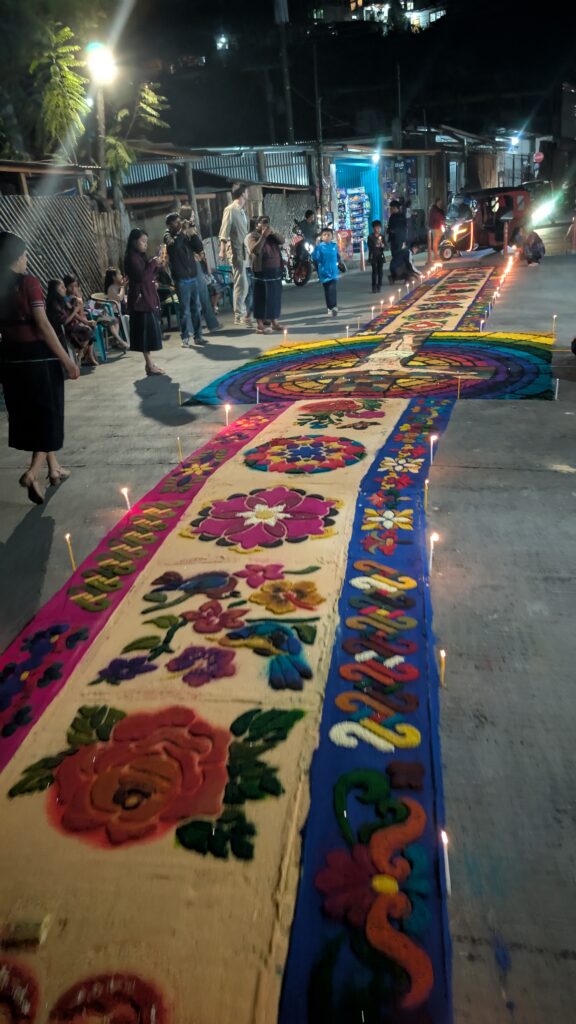
Alfombras in San Marcos la Laguna — impressive for a tiny village!
The Guatemalan highlands is a fantastic area to buy textiles, go to traditional weekly markets, and just observe the traditional culture. The markets were a bit extra special here – typical in a lot of respects, but the hand woven textiles were abundant, with the local culture on full display in the traditional clothing worn by the local indigenous Mayan people. Each village has its own specific traditional clothing colors/patterns, not unlike the Scottish kilts made in a specific tartan to identify the wearer to a clan. We learned later that during the Guatemalan Civil War (1960-1996), the men, who traveled outside their villages for work or other reasons, stopped wearing the traditional outfits and switched to western-style clothing to disguise where they came from because the Guatemalan military killed civilian men just because they came from areas where the insurgency was strong. In contrast, the women didn’t travel and did not have the same risk. As a result the indigenous women in this area almost all still wear traditional clothing but most men don’t. It’s sad to have mostly lost this male tradition, but it was neat to see that a few older men still carry it on.
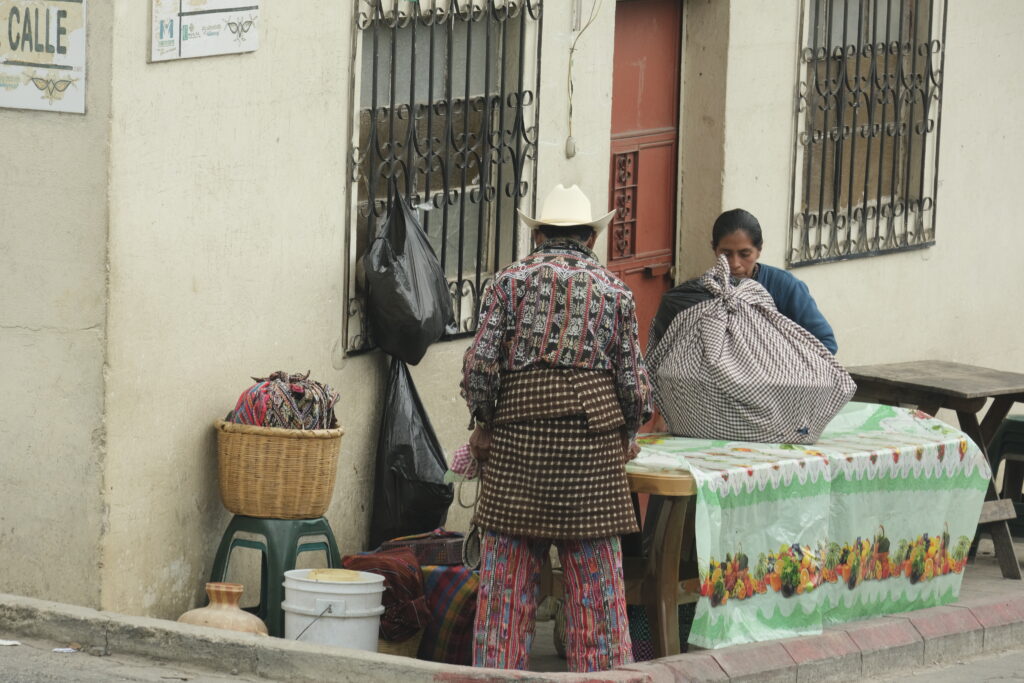
Note the man’s traditional outfit in Solola, my favorite town in the area that we visited
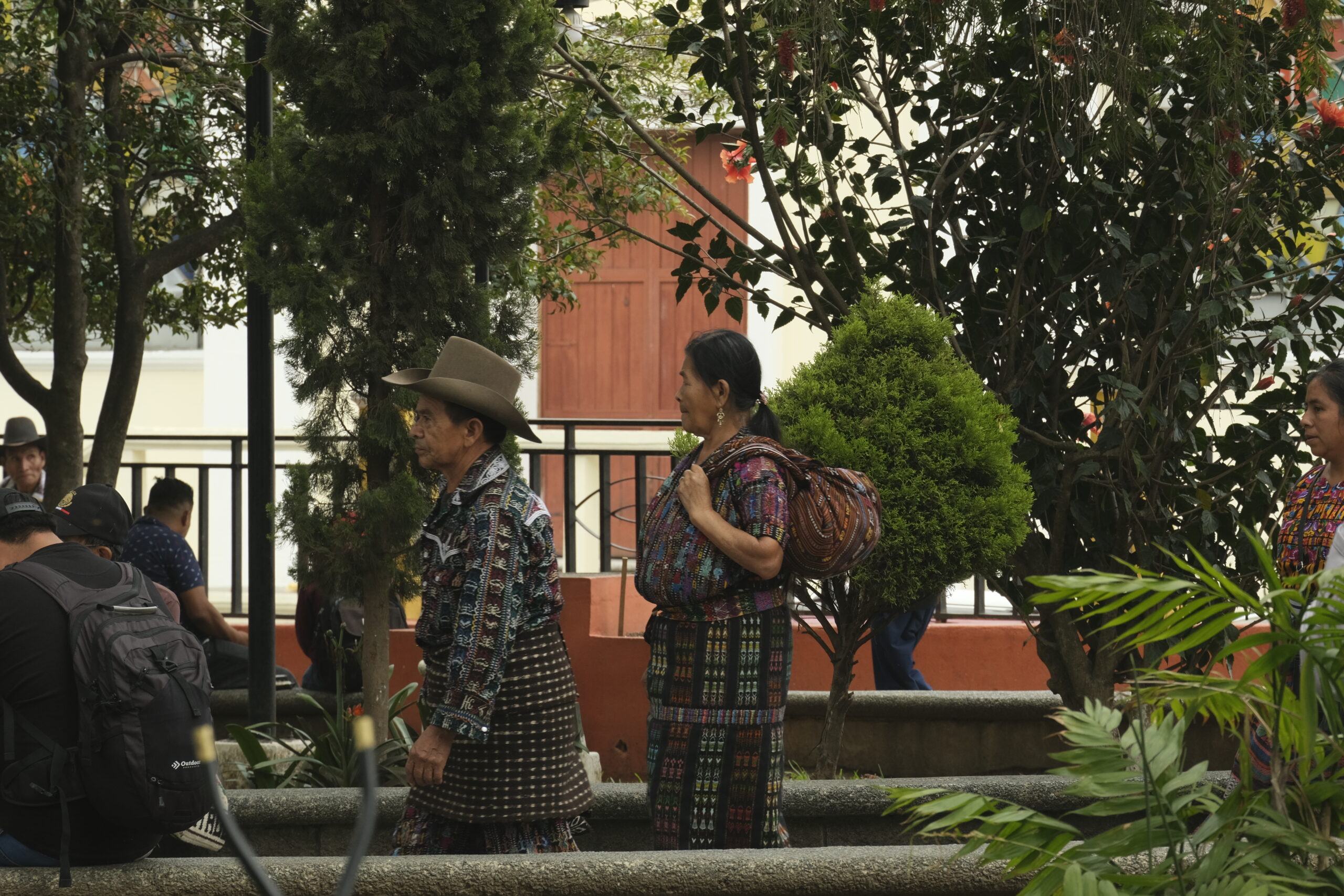
In the Central square of Solola
The national bird of Guatemala is the resplendent quetzal, which was a very important bird to the ancient Mayan people. The Quetzal is also the name of the Guatemalan currency. We had attempted to see this bird in Panama to no avail, and we had heard there was one area around Lake Atitlan that had regular quetzal sightings. So we signed up for a half-day quetzal birding tour with Atitlan Expeditions (https://www.atitlanexpeditions.com/). There was some hiking in, then waiting near a tree where they typically fly to in the mornings, and it finally dawned on us that when you go on a tour that is focused on seeing a specific bird, you’re going to end up birdwaiting. We hadn’t done that kind of birding before the Darien, and we agreed it’s not our favorite thing to do. But on this trip, we only waited about 30 minutes before we saw two male quetzals with their incredible coloring and long tails fly to the tree and perch there for a while. I had always pictured them as being about robin-sized, but they are bigger than that, closer to the size of a crow. They are gorgeous – aptly named resplendent! Their breast is bright red, and you can see it at the end of this video:
We liked the guides, and having seen the quetzal and other cool birds, I started to think about their other full day tour in the area that involves a harder and longer hike to higher altitude to see a very rare and unique-looking bird (only 2,000 left) that only lives in the highland area: the horned guan. The description of the outing was: “This tour is designed for all those extreme birdwatchers who like a challenge as it requires good physical and mental preparation. The difficulty level is high. The trail starts between coffee, avocado and corn crops and then enters the secondary forest. After 2200 meters above sea level, the primary forest appears,” which is where the horned guan may be sighted. Not at all sure we are “extreme birdwatchers,” or what that actually means, I decided I was up for it and Peter got on board because he thought it would be a good hike…
The guide recommended leaving at 4:00 a.m. We pushed back on that insanity and they agreed to a 5:00 pick up, with the hike starting at 5:30. We could deal with that. Up before the sun, off we went in their 4×4. By the time we got to the trailhead, it was light enough to see the trail and we started up. We’ve realized they don’t seem to favor switchbacks in Central America, they prefer walking straight up the mountains, regardless of how steep that makes a hike. This one quickly got steep, as warned. We took a “shortcut” off trail that felt a lot like mushroom hunting on a very steep slope (even saw a few mushrooms!), and then we got back to the trail where Peter and I were told to wait while the guides went to try to scout for the bird because they said this was nesting season and the birds don’t call out during that time, so they are very hard to see (kinda wish we had known that before we signed up for this). We were thankful to have a break, but we were wearing everything warm we had with us and it was still cold. We waited forever. Peter eventually hiked up to try to warm up and came back saying he had seen the horned guan and had a photo of it:
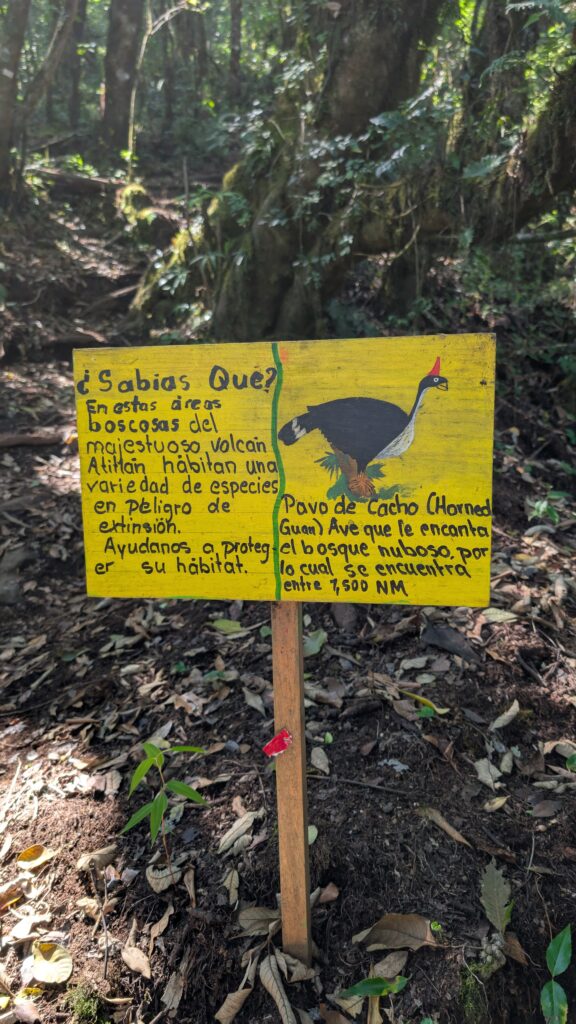
Peter’s sighting of the horned guan
After another half hour when our lead guide still wasn’t back, Peter was hungry (long story on that) and had had enough of this so he went down, convinced this was a miserable waste of time. One guide had to go with him, so I continued to wait alone for our main guide to return. He finally did, and at that point he wanted me to see the bird more than I did, but I hung in there because he had just spent 2 ½ hours scouting for us, and I wasn’t hungry because I had eaten my entire lunch by 10:00. We tried a few spots on the trail, and then the guide said we’d wait at this final spot for another 20 minutes and then head down. Cognizant that Peter had already been waiting for me at the trailhead for 90 minutes and we needed about an hour to hike down, I told him, as nicely as I could, that I thought we better leave and I understand it’s nature, not a zoo, etc. etc. etc. I could tell he was disappointed but agreed. I understood his reaction because he’s normally dealing with serious birders who have flown thousands of miles to see this bird, not people there for other reasons who on a whim decide to see a bird they’ve never heard of. He said we should take a “shortcut” down because there would be more people coming down the trail who had been at the summit for sunrise, which would scare off the bird. Peter had previously said he was absolutely not taking another “shortcut,” so at that point I was very glad he had gone down. Our main guide, Freddy, was under 5 feet tall (not to mention amazingly fit) and was able to very easily duck under all these branches that took me longer to do more awkwardly, but we were heading down, it was already warmer, and I wondered how crabby Peter was going to be when we finally got there. Suddenly Freddy grabbed my arm and pulled me over, pointing up into a tree, excitedly whispering loudly “looklooklooklooklook!!” and praising God in Spanish. There it was, a horned guan just alighting in a tree. I couldn’t believe it, I was convinced we were not going to see this bird. I would say the horned guan was as impressive as the harpy eagle in its own way. It’s a huge bird, over 3 feet long from beak to tail, and so gentle looking I felt myself wanting to hug it. We were pretty close, and we watched him or her from a few spots for about 20 minutes, just looking around in its gentle way. I whatsapp’d Peter that I was watching the bird now so he’d have a status update.
When we got down, I was greeted by a hangry spouse who somewhat grumpily asked if we had seen the horned guan; ugh, my whatsapp hadn’t gone through. He said he felt better that I had actually seen it. And, the next morning he admitted that he was a little jealous that I got to see it. As he should be! But only a little, he assures me.
We did a few other things as well, including taking a round-the-lake motorcycle trip over two days and explored most of the other villages that surrounded the lake. We confirmed that Google Maps is not always accurate when it says you can go this way from A to B, and you want no less than a 250cc bike on those hills. All in all, a very fun two days.
Then, we were off to Honduras for our final 18 days of the trip.
Categories: Central America, Nature, Travel, Uncategorized
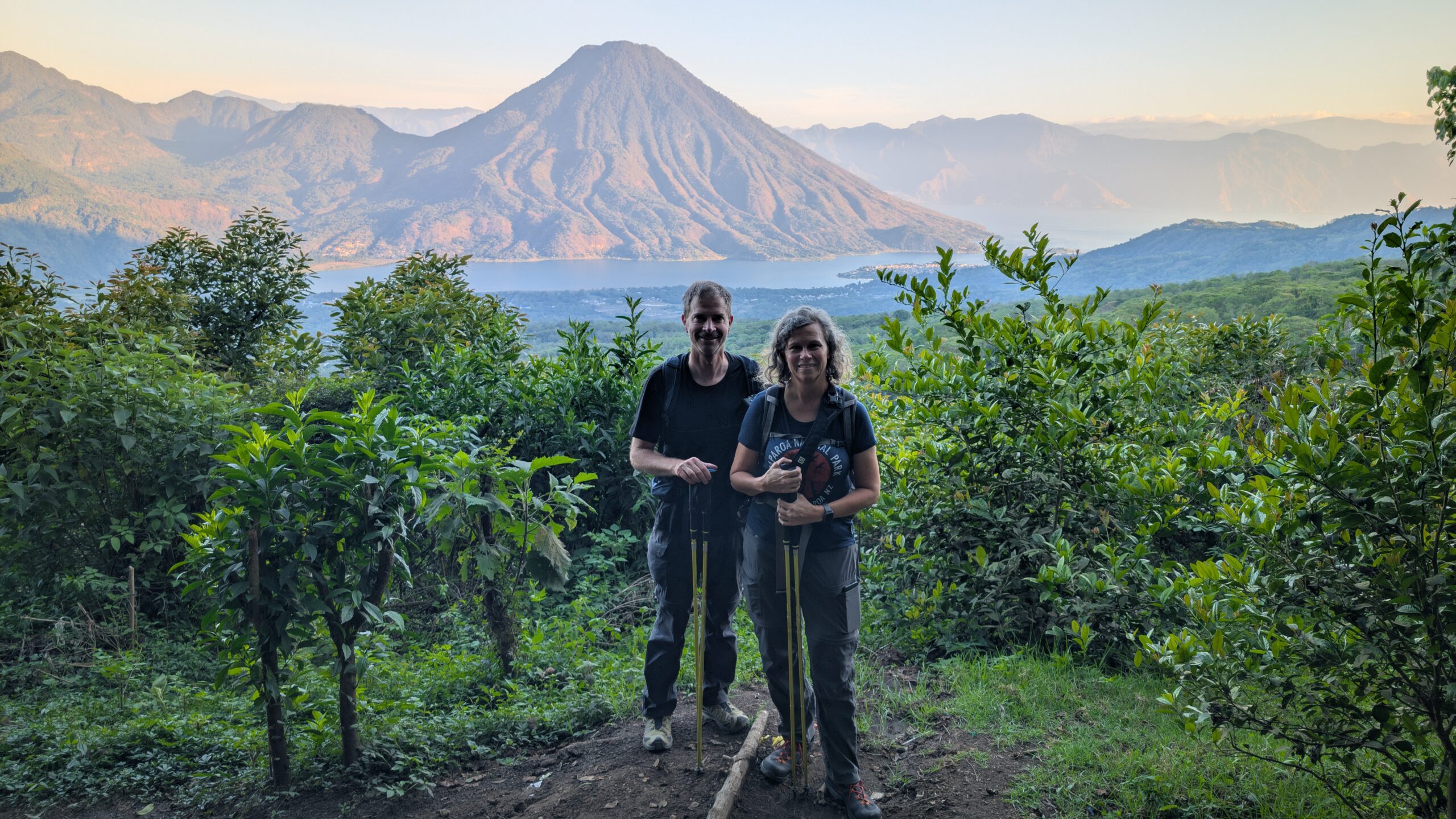
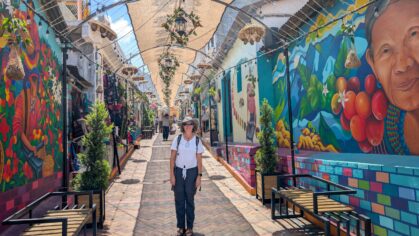
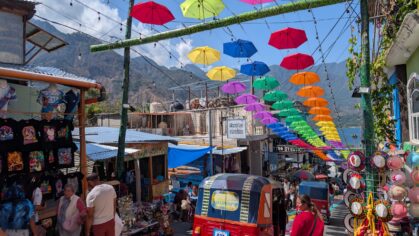
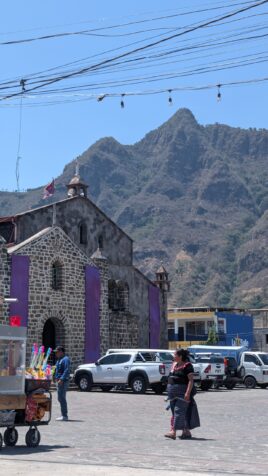
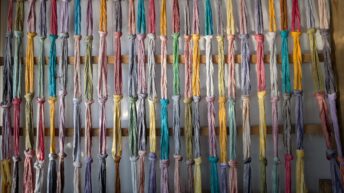

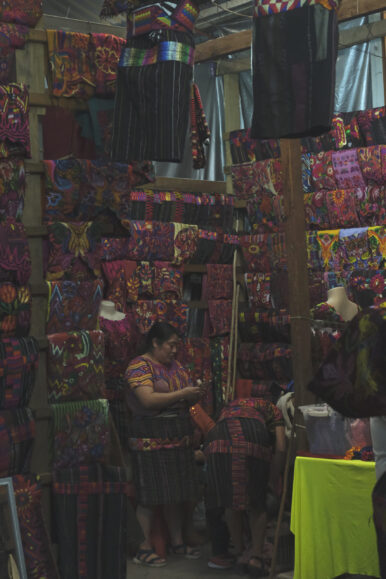
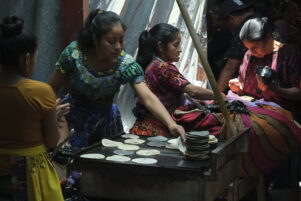
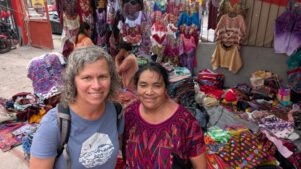
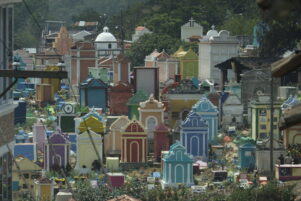
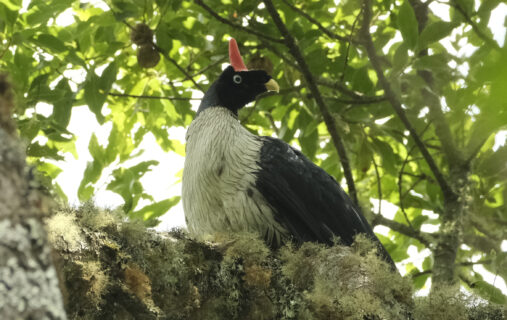
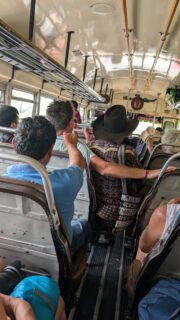
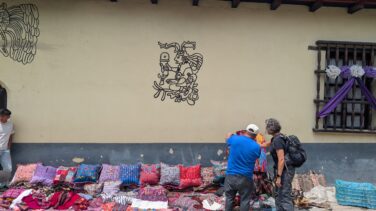

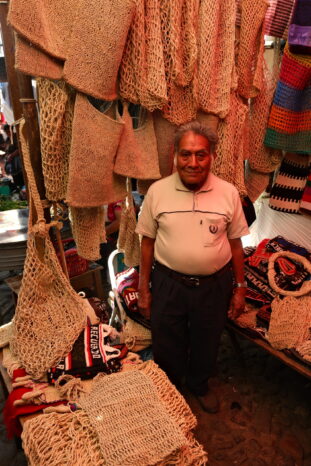
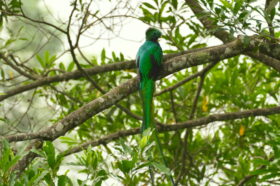
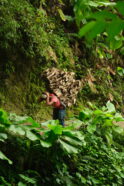
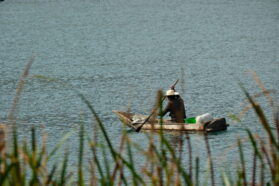

Thanks for another update on your fantastic adventure!! You both amaze me with your stamina for all your hiking!! The videos of your birdwatching was neat!!
For only semi serious birders, you two have hit the jackpot. Serious birders would pay 5 – 10K to see these birds and they would pay it happily w/o any guarantee. Second comment – are you really working? Third comment – you are doing all the right things to stave off neurodegenerative disease as you age. Those being seeking new experiences, experience that stretch you and offer intellectual challenge, living with uncertainty, happily I might add, adding new learning all the time. Another way to summarize it is spending a lot of time at the edges of the comfort zone. That’s where all the growth is. Most of us, as we age, move more towards the center of the comfort zone. It’s much harder to move toward the edge, but very healthy. Well done.
Yes, we’re really working 🙂 We are taking a day or two off here and there, and maximizing our weekends. Thanks Wren!
I loved the bird watching and he colorful market scenes. I am vicariously enjoying your trip. Thank you for sharing.